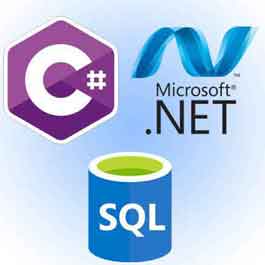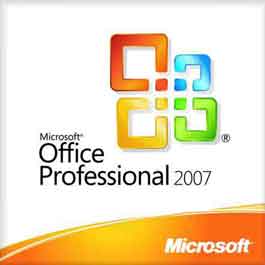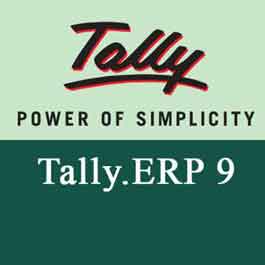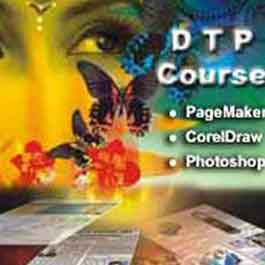Autodesk 3ds Max Class in Pune pimpri chinchwad (c'wad) , course, training, istitute, classes, coaching, India Autodesk 3ds Max Course , 3ds max coaching classes in pune, 3ds max training institute in pune , 3ds max coaching in pune, 3ds max class in pune
3D Max Course Pune
3D Max Course
1 - The Interface
- The Command Panel
- Zoom and Pan with the Wheel
- The View Cube
- The Zoom Panel
- Viewport Layouts
- Right-Click to Activate a View
- Viewport Shade Modes
- Perspective, Orthographic, Top and Other Views
- Safe Frames
- Rendering Setup to Control Safe Frame Size
- Grids, Statistics, and Viewport Configuration
- Display Drivers
- Undo/Redo
- Preferences
2 - Selection and Transformation Tools
- Selecting/Deselecting Multiple Objects
- Window/Crossing
- Selection Types
- Naming Objects
- Selecting by Name
- The Selection Filter
- The Move Tool
- The Transform Gizmo
- Absolute/Offset Transform Modes
- Pivots
- View and Local Coordinate Systems
- Rotate and Scale
- Select and Place
- Moving Objects Along Local and View Axis
- Object Snaps
- Angle Snap
- Percent Snap
- Spinner Snap
- Selection Sets
3 - Mirroring, Aligning, Grouping, and Cloning Objects
- Mirroring Objects
- Aligning Positions
- Aligning Orientations
- Normal Align
- Grouping/Ungrouping
- Editing Groups: Open, Close, Attach, Detach, and Explode
- Using SHIFT with Transfromation Tools to Clone Objects
- CTRL+V
- The Quad Menu
4 - Creating Precise Basic Architectural Objects
- Creating Simple Walls and Doors
- Aligning Doors with Walls
- Moving Doors Using Local Axis
- Creating Openings Using Boolean
5 - Creating a Restaurant Scene
- Units, Grids and snaps
- Modeling a Chair
- Monitoring Statistics
- Keeping Polygon Count Under Control
- Assigning Materials to the Chair Components
- Grouping the Chair
- Creating Three Additional Chairs
- Modeling a Table
- Assigning Materials to the Table
- Using the UVW to Correct Material Display
- Grouping the Table
- Placing the Chair in the Center
- Grouping the Table Set
- Using Plane to Create the Floor
- Assigning Checker Material to the Floor
- Creating the Walls Using C-Ext
- Assigning Bricks_Yellow Material to the Walls
- Using UVW Box Map to Correct the Wall Material
- Creating Roof and Assigning Material
6 - Introduction to Lighting, Cameras, and Animation
- Creating an Omni Light
- Activating Shadows
- Adding a Skylight
- Adding a Camera
- Using Multiple Viewports to Position the Camera
- Rendering Still Images
- Animating the Camera Movement
- Introduction to Keyframes
- Rendeing the Animation
- Ceating AVI or Quick Time Movie Files
- Creating TGA Sequence of Images
- Viewing Sequences Using the RAM Player
7 - Introduction to Mesh Objects
- Primitive Objects
- Converting Primitives to Mesh Objects
- Modifying Mesh Objects: Vertex, Edge, Face, and Polygon
- Creating Stairs, Walls, Roofs, and Slabs Using Mesh Objects
- The Editmesh Modifier
- Meshsmooth
- Building Stacks
- Collapsing Stacks
- Soft Selection
- Creating an Anchor
- Creating a Cane
- Using the FFD 4x4x4, the FFD 3x3x3, and the FFD 2x2x2 to Modify Objects
8 - Modeling Using Mesh Objects
- Creating and Animating a Logo Using Text Shape, Extrude, and the FFD 4x4x4 Modifier
- Creating a Pool
- Rippling and Waving Water
- Slicing a Teapot
- Designing Iron Plates
- Smoothing Groups
9 - Poly Objects
- Difference Between Mesh Objects and Poly Objects
- Smoothing a Poly Object
- The Editpoly Modifier
- Creating a Light Pole
- Creating a Sofa
- NURBS Modeling
- Using Rhino to Create Complex Curvy Objects
10 - Shapes
- Shape Objects: Lines, Circles, etc.
- Creating and Animating a 3D Helix .
- Editing Shape Objects: Vertex, Segment, Spline
- Interpolation
- Vertex Types: Bezier, Bezier Corner, Corner, Smooth
- Creating Internal Lines
- Attaching External Lines
- Editing Vertices: Break, Fuse, Weld, Refine, Insert, Make First, Connect, Cycle, Fillet, and Chamfer
- Editing Segments: Divide
- Editing Splines: Reverse, Outline, Boolean, Mirror, Copy, Trim, and Extend
- Attaching and combining shape objects
11 - Using Shapes to Create 3D Objects
- Creating a Bolt Opener
- Creating a Flower
- Creating a Gear
- Linking Objects
- Creating a Cup
- Creating a Bottle
- Creating a Metal Rod
- Creating a Cornice
- Creating a Ramp
12 - Creating a Wrought Iron Dining Table
- Opening the Finished File
- Ungrouping
- Inspecting the Objects
- Creating a Similar Design
13 - Importing 2D Plans from AutoCAD and Modeling in 3DS Max
- Importing a 2D Plan from AutoCAD
- Pressing X to search for the Tape Measure command
- Using the Tape Tool to Measure Distances
- Using Shapes to Create the Side Wall and the Window
- Creating the Front Wall
- Importing and Attaching AutoCAD Polylines
- Creating the Roof
- Using AutoCAD Polylines and Other Techniques to Model a House in 3ds Max.
14 - Importing AutoCAD Polylines to Model a House in 3DS Max
- Opening the File in AutoCAD
- Organizing Shapes Into Layers
- Using the Polyline Command to Create Shapes to Be Used in 3DS Max
- Importing the AutoCAD File Layer by Layer
- Using Imported Polylines to Create Architectural Objects
15 - Introduction to Animation
- Creating the Table and the Ball
- Configuring Time
- Animating the Bouncing Ball
- Using Keyframes to Control Speed
- The Motion Panel
- Animating the Table Rotation
16 - Standard Lights
- Using Target Spotlights
- Spotlight Properties
- SHIFT $
- Free Spotlights
- Target Direct Lights
- Free Direct Lights
- Omni Lights
- Skylights
17 - The Standard Lighting System
- Key Lights
- Fill Lights
- Back Lights
18 - The Daylight System
- Creating a Daylight System
- Setting True North
- Location Data
- Date and Time Data
- Setting Exposure Control
- Logarithmic Exposure Control Parameters
19 - Night View
- Adding Photometric Lights
- Using Light Templates
- Exposure Control
20 - Standard Material
- The Material Editor
- Material Slots
- Shader Basic Parameters
- Blinn Basic Parameters
- Using Diffuse Maps
- Bitmap Properties
- Bump Maps
- Using Adobe Photoshop to Create Diffuse and Bump Bitmaps
- Creating Seamless Material
- Difference Between Get and Create New Material
- Material Library Stocks
21 - UVW Maps
- Planar
- Cylindrical
- Spherical
- Box
- Shrink Wrap
22 - Rendering a Hut Imported from AutoCAD
- Importing the Hut from AutoCAD
- Assigning Wall Faces IDs
- Applying Multisub-object Material to the Walls
- Applying UVW Material to the Walls
- Bitmap Map Channel
- Applying Material to Roof
- Unwrap UVW
- Applying Material to the Door
- Changing the Door's Pivot
- Applying Material to the Windows
- Force Two Sided, Flip Normals, and 2-Sided Material
- Adding Ground, Trees, Sky, and a camera
- Calculating Rendering Resolution Using the Print Size Assistant
- Rendering and Exporting to Adobe Photoshop
23 - Rendering a Large House Imported from AutoCAD
- Importing the House from AutoCAD
- Assigning Wall Faces IDs
- Creating Multisub-object Material
- Assigning Multisub-object Material to the Walls
- Applying UVW Material to Walls
- UVW Bitmap Map Channel
- Assigning Material to the Roof
- Unwrap UVW
- Detaching Stairs
- Assigning Material with Flat Mirror Option
- Assigning Material to the Pavement
- Raytrace Reflections
- Using Raytrace Material to Create Glass Material for Windows
- Adding Trees and Cars
- Configure User Paths
- Using Populate to Simulate Walking People
- Adding Lights and Shadows
- Rendering Stills Using Many Cameras
24 - Walkthroughs
- Drawing the Camera Path
- The Walkthrough Assistant
- Time Configuration
- Rendering the Animation
Course Features
- Lectures 50
- Quizzes 2
- Duration 45 hours
- Skill level All level
- Language English
- Students 80
- Certificate Yes
- Assessments Self
-
3D Max Course Flow
- Unit 1.1 The Interface
- Unit 1.2 Selection and Transformation Tools
- Unit 1.3 Mirroring, Aligning, Grouping, and Cloning Objects
- Unit 1.4 Creating Precise Basic Architectural Objects
- Unit 1.5 Creating a Restaurant Scene
- Unit 1.6 Introduction to Lighting, Cameras, and Animation
-
Dinesh Pawar
BCA
Neha Agarwal is a very good teacher.She taught us 3DMax very nice. And we have done the project in 3D Modelling By using 3DMax we have developed a short flim in group.
-
Suresh Patil
MCA
Pooja Sawant is a nice teacher. She taught us various 3D Modelling techniques and Polygon techniques And she Creates the interest learning in 3DMax technology.
-
Sai Prasad
Diploma
Ashwini Rathod is very wonderful teacher. We have learned how to creates the shape like Box,Cylinder,Cone,Sphere in 3DMax technology. And in 3D Modelling techniques we have learned how to design a game by using various tools
-
Neha Pawar
BE
By using the 3D Modelling we can have the idea of mini games as well as the big games.Rajesh sir is a very good teacher. He taught us the advance techniques in 3DMax and 3D Modelling . 3D Modelling is a best Course.








